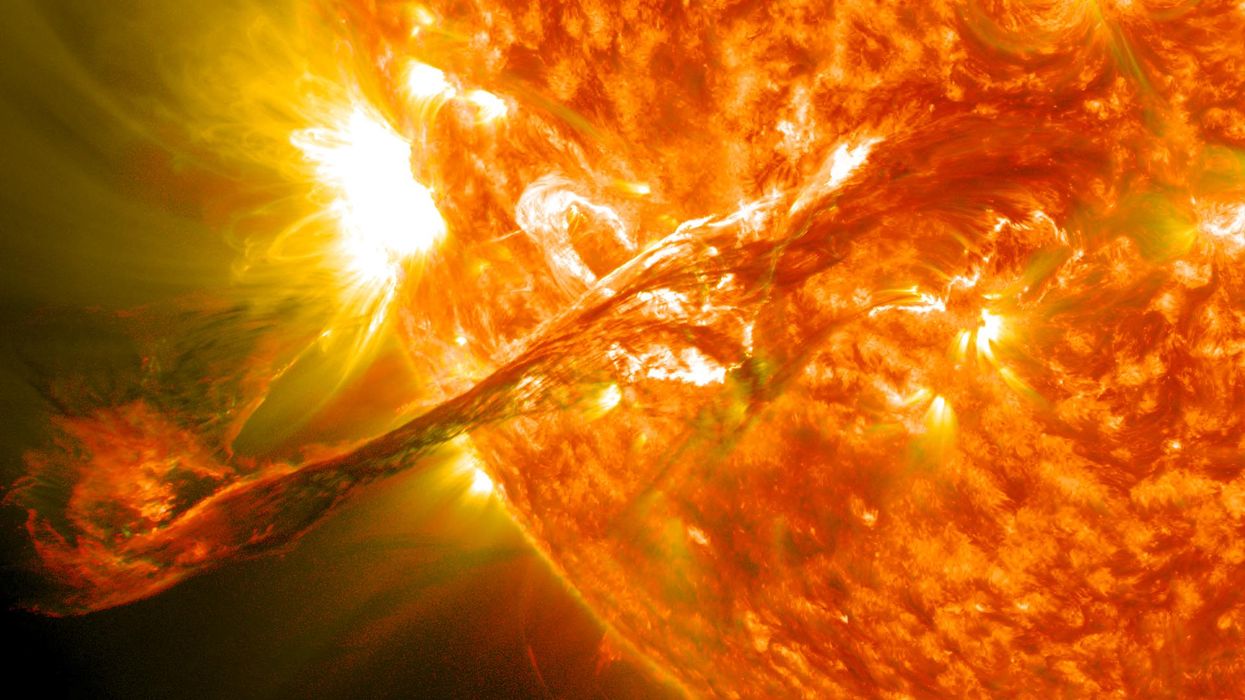
NASA Goddard

The sun's magnetic field undergoes a cycle approximately every 11 years. According to NASA, "The sun transitions from relatively calm to active and stormy, and then quiet again." When it gets stormy, the impact can be highly destructive.
The sun's current stage of transition is much more active than scientists had predicted in 2020. "At its most active...the sun is freckled with sunspots and its magnetic poles reverse."
The monthly average number of sunspots at this stage in the solar cycle far exceeds the number forecasted by scientists. According to the Space Weather Prediction Center, in July the sunspot number was 91.4, whereas the predicted value was 42.8.
Not only is the sun more active than scientists expected at this stage in the cycle, this activity will only increase as we near the solar maximum in 2025.
NASA has suggested that with increased activity comes "an increase in space weather events including solar flares and solar eruptions, which can impact radio communications, electric power grids, and navigation signals, as well as pose risks to spacecraft and astronauts."
In 1859, astronomer Richard Carrington observed a massive solar flare vented by the sun. The resulting "electrified gas and subatomic particles" damaged telegraph communications the world over, causing some machines to spark while setting others ablaze.
Given the ubiquity of sensitive technology today, a coronal mass ejection (CME) produced by a flare like that witnessed by Carrington could "blow out transformers in power grids" or cause high-frequency radio signals "to become degraded or completely absorbed," resulting in a radio blackout.
One of the strongest CMEs in recorded history, on par with the Carrington Event, narrowly missed Earth on July 23, 2012. On March 10, 1989, a CME larger than 36 Earths landed a direct hit.
\u201cHuge solar eruptions called coronal mass ejections (CMEs) will likely become more frequent as we approach the peak of the Sun\u2019s 11-year activity cycle \u2013 called solar maximum \u2013 in 2025.\n\nThis video shows several CMEs soon after the last solar maximum.\n\nhttps://t.co/SWedOm7Uh9\u201d— NASA Sun & Space (@NASA Sun & Space) 1659204046
Two days after the initial solar eruption, the 1989 blast kicked off a geomagnetic storm that resulted in a series of electrical surges and glitches. Scientific American noted that a transformer at a nuclear plant in New Jersey was destroyed and that power grids all over North America and Europe were affected, not least Canada's Hydro-Quebec power utility grid, which crashed altogether.
Over the weekend, NASA reported a C9.3-class solar flare. Since a C-class flare is only ranked second of four categories designating size and intensity (i.e. B, C, M, and X) — with each letter class having a subclass rating numbering from 1 to 9 — it was relatively weak, although Newsweek's Ed Browne has suggested that it may have been underestimated.